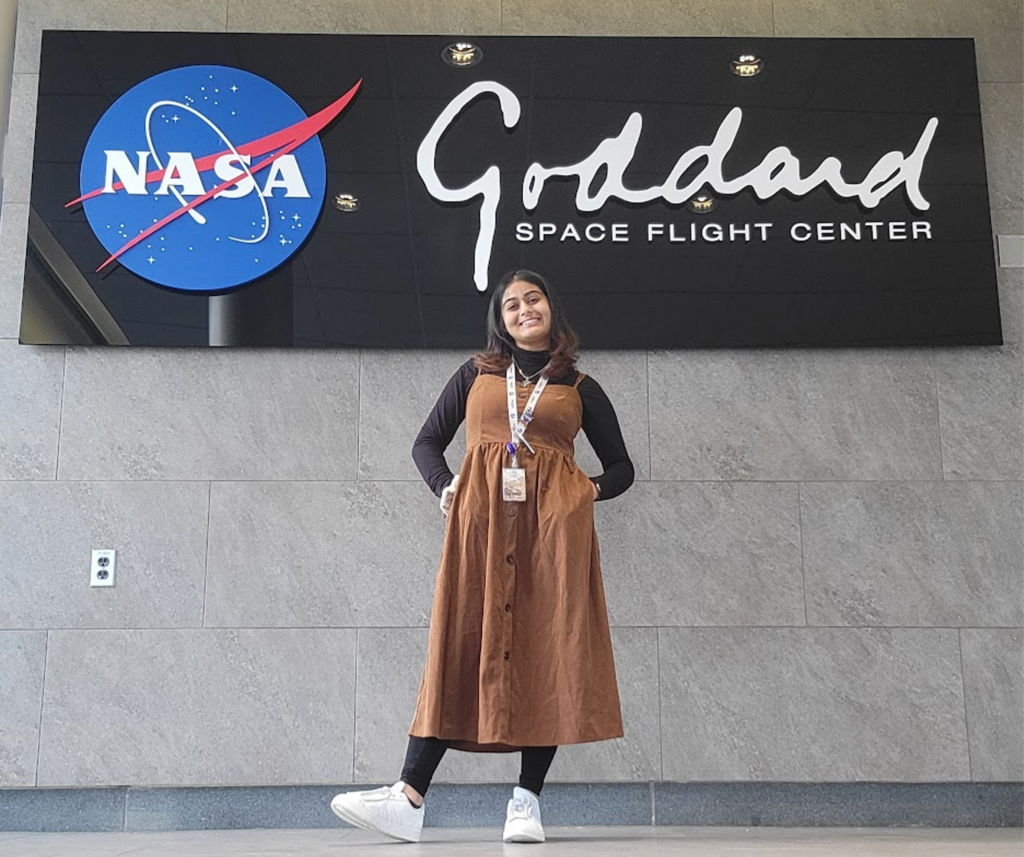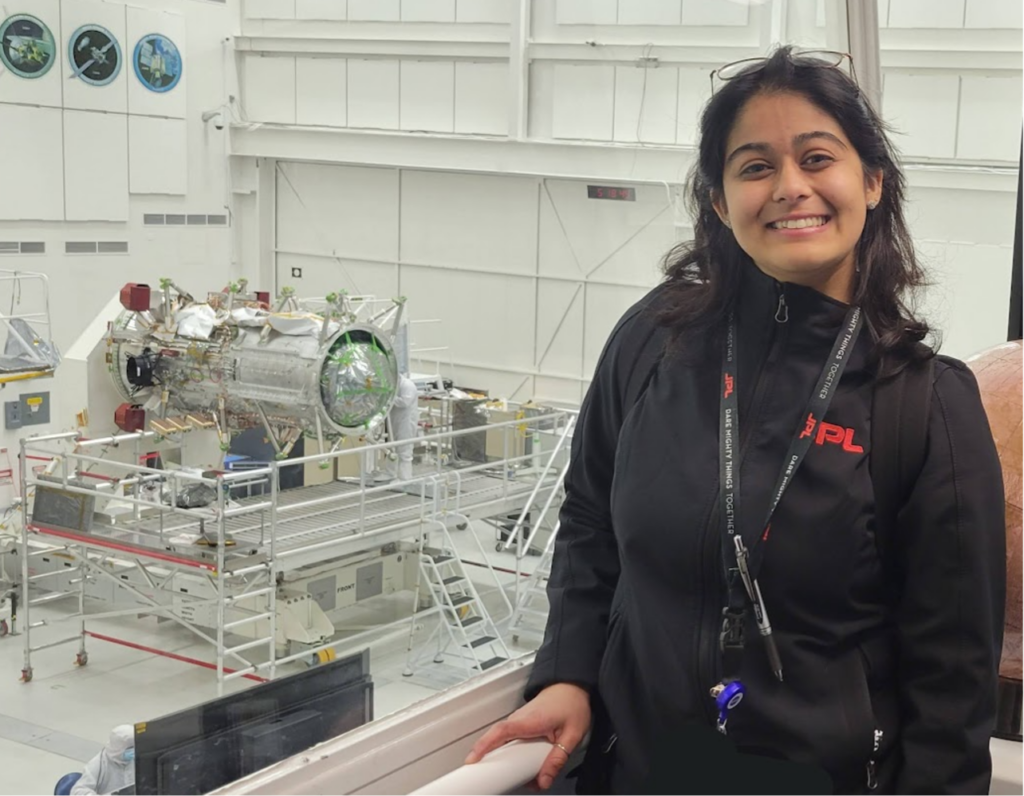
Transmissions from Beyond: The Phone Call
My phone buzzed. An unsaved number popped up on the screen. I was in the middle of my annual pre-winter break drive from Michigan to New Jersey, heading home for the holidays. This would have been my last winter break of undergrad, but life had taken an unexpected turn. I had just decided to take the upcoming semester off to work with NASA’s Jet Propulsion Laboratory – a childhood dream come true. As I drove, thoughts of my upcoming work at JPL consumed me, and the hours flew by. Suddenly, my mom’s voice brought me back to reality, “Saima, who is it? Pick up the phone.” I glanced at the caller ID, a Virginia number. Confused, I swiped the answer icon on my phone, and the call connected to my car’s bluetooth.
“Hi, is this Saima Jamal?” a woman’s voice filled my car. “Yes, this is Saima speaking,” I responded. “Hi Saima! This is Lori. I’d like to personally congratulate you on becoming a 2023 Brooke Owens Fellow!” My mind went blank, and I tightly gripped the steering wheel, trying to absorb the incredible news. My mom’s mouth hung open. She urged me to pull over. “You’ll be receiving our email correspondence in a few days. In the meantime, try not to post anything before our press release goes out,” Lori continued. I couldn’t find the words to respond.
I had applied to the fellowship after seeing a flier in the U-M CLASP building. What I thought would be a simple application turned into a several month long process with multiple rounds of interviews with the Executive Fellowship team and leading aerospace companies. I couldn’t believe I had finally made my break in the space industry.
Hi, I’m Saima Jamal, an undergraduate senior in U-M Mechanical Engineering, and this is the story of what I’ve been up to beyond ME since January 2023.
The Stars are Calling, and We Must Go: The JPL Experience

After that winter break, I moved to Los Angeles, which was the farthest I had ever been from my family, and while the weather wasn’t as glamorous as I had hoped it would be for the 6 months I was there, my experiences at JPL definitely made up for it! At JPL, I supported the Europa Clipper “Magboom” team. Europa Clipper is an interplanetary mission that is predicted to launch in October 2024 and will be studying one of Jupiter’s moons, Europa. Among the possible sites for discovering life beyond Earth, Europa is especially promising due to findings from the Galileo mission. During this mission, it was observed that a strong magnetic field was induced by Europa, leading scientists to hypothesize that a global salty ocean is hidden underneath Europa’s thick icy shell. Clipper will investigate the presence of this ocean and determine if the body of water is capable of sustaining life.
One of Clipper’s many instruments is the “Magboom” which stands for Magnetometer boom. When fully deployed, it is an 8.5 meter long mast that contains three magnetometer sensors. These sensors will be used to determine if Jupiter’s moon has a global ocean and, if yes, measure the depth and salinity of that ocean and the icy shell that is hiding it. These findings will be of extraordinary importance to the scientific community and will help us understand our place in the universe and the possibility of life beyond Earth.
I joined the Magboom team at an important phase in the mission timeline. The team was pushing to meet the delivery schedule of the hardware to Assembly, Test, and Launch Operations (ATLO), the phase of a spacecraft project in which the spacecraft is built, tested, and launched. As an intern I had several responsibilities such as developing ground support equipment, leading test campaigns, and performing Verification and Validation for the spacecraft. Working on a variety of projects helped me better understand the capabilities of a mechanical engineer and what spaces in the industry I am interested in. At JPL, I found a love for design work and, in parallel, test engineering. For several test campaigns, I credit the skills learned from ME 395 and ME 495 as they helped me develop successful procedures and effectively communicate my findings to my team.
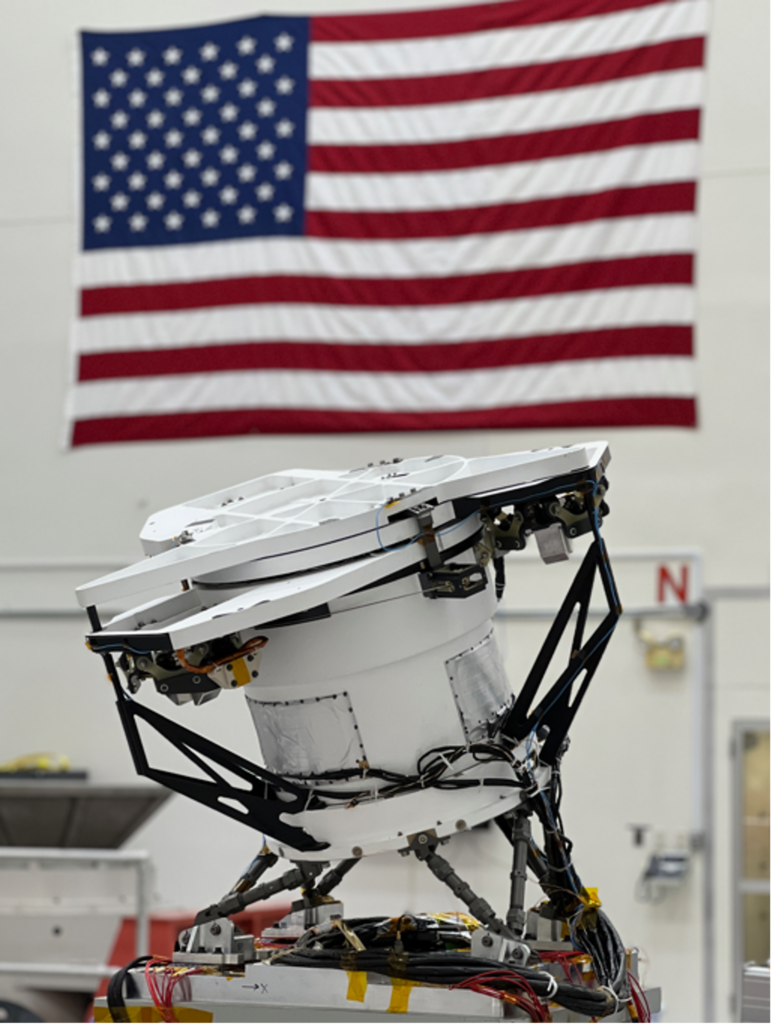
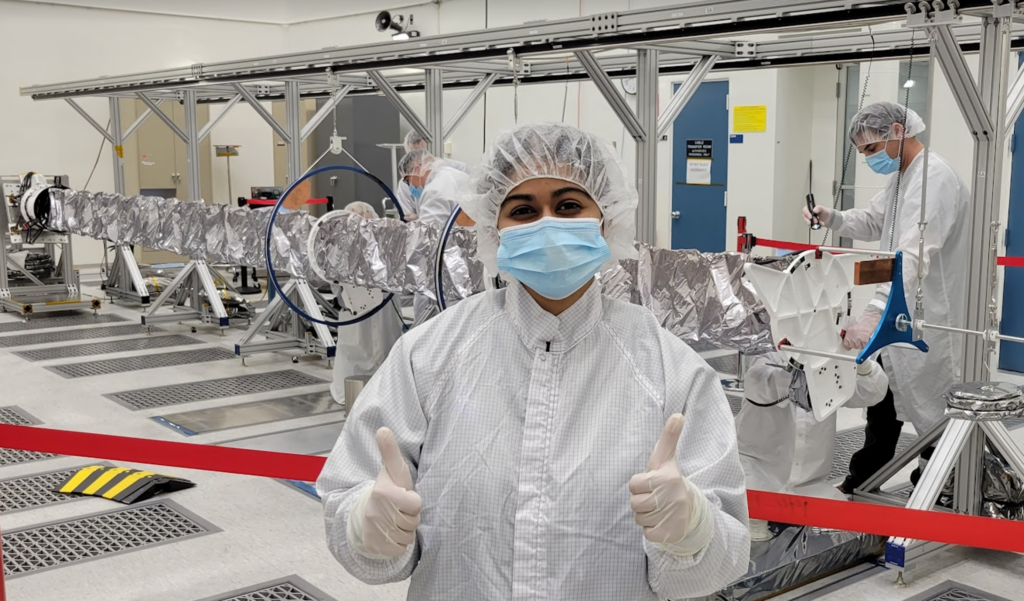
Throughout my internship, I had the opportunity to closely collaborate with several types of engineers. For example, one of the larger tests I was leading was the Contamination Control (CC) Bakeout procedure for the Magboom. Different missions have specific cleanliness requirements for its hardware depending on that hardware’s expected proximity and interaction with a celestial body. For the Magboom, I had the chance to work with thermal engineers, CC engineers, technicians, and several other support personnel. It was a great opportunity to learn about what priorities different teams have and finding middle grounds to successfully complete the test. After the conclusion of our test, I even did the walkout of our hardware from our Environmental Test Lab to the cleanroom where it would be housed for final testing!
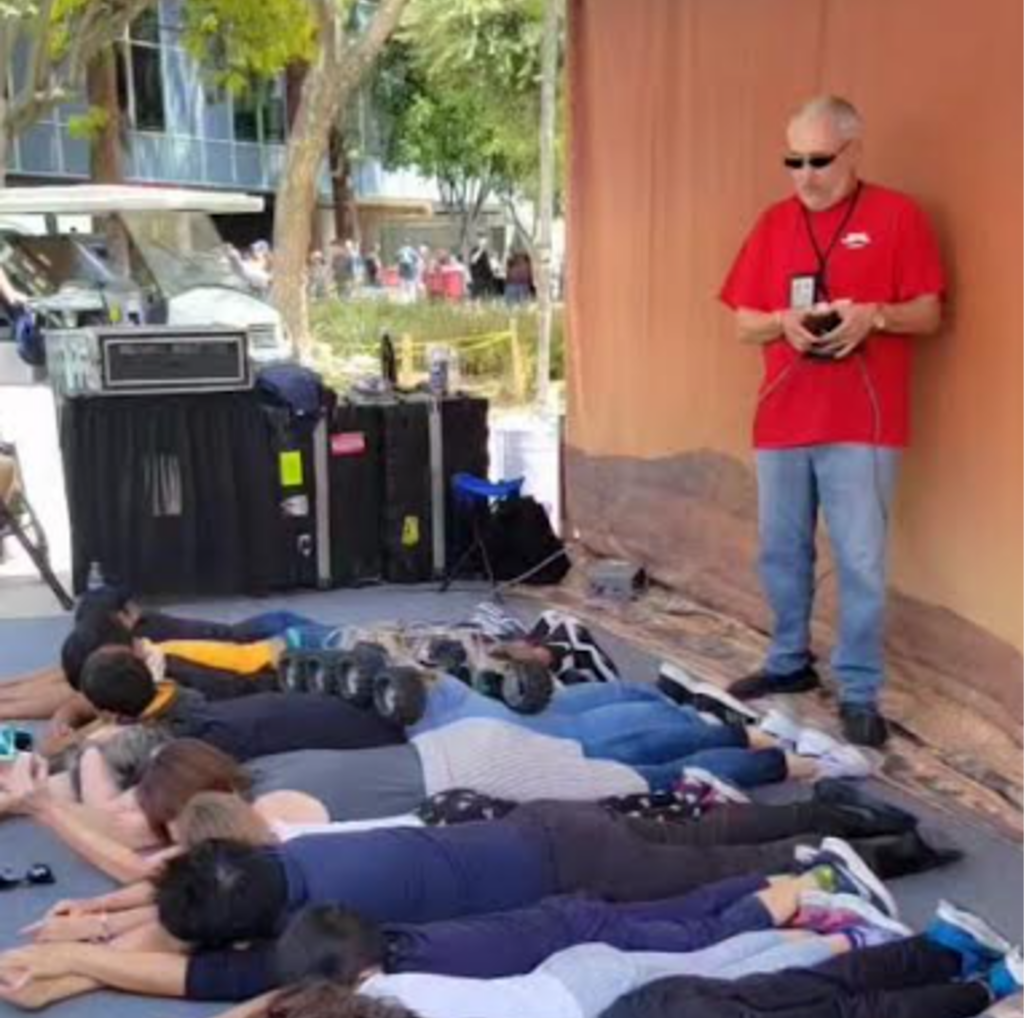
While working with actual flight hardware was extraordinarily rewarding, one of the most memorable experiences from my internship was “Explore JPL,” a ticketed event occurring twice a year where several thousand people can visit the Lab to see the amazing work JPL’ers do. I had the chance to man a station where we drove the first rover prototype over kids and adults alike! The giggles and amazement brought by space technology is something I will never forget. Guests could also learn about Clipper and the upcoming Mars Sample Return mission. They could check out the Ingenuity helicopter as it performed flights and tour JPL’s world-class facilities. I couldn’t believe that my workplace had become an amusement park for the space enthusiasts hidden within all of us. Seeing so many people at the Lab was an immensely fulfilling experience and gave me an opportunity to share the technical engineering side of my work with the general public.
To Andromeda and Back: Goddard and the Brooke Owens Summit
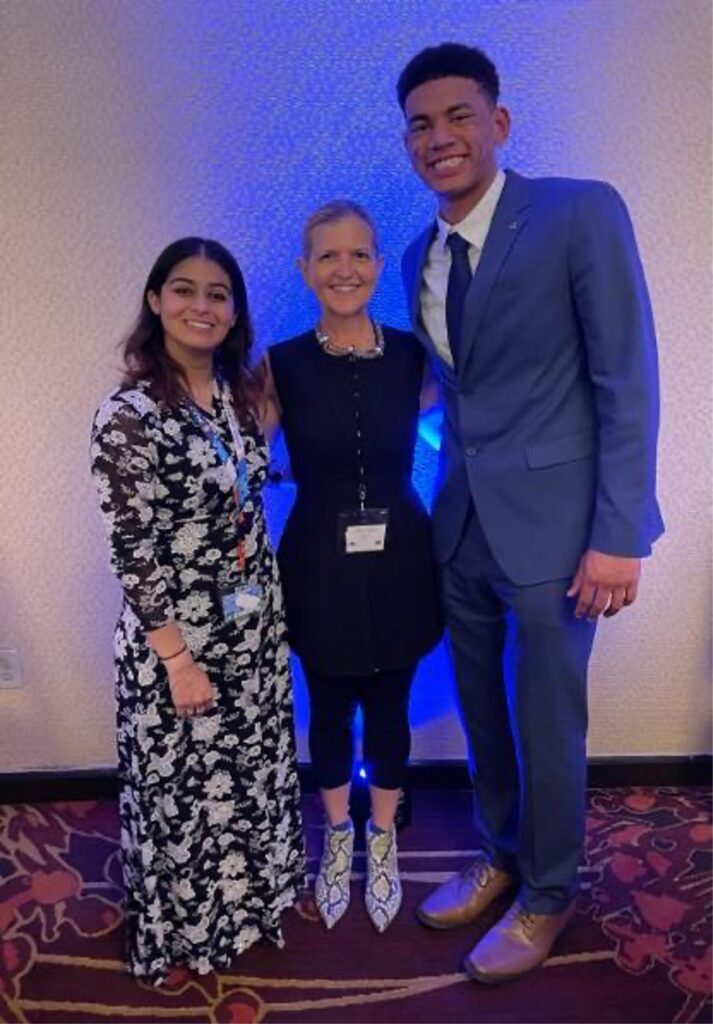
After a successful and extraordinarily rewarding few months with JPL, I relocated back to the east coast, to Greenbelt, Maryland where I would support NASA Goddard through the Brooke Owens Fellowship (BOF). There are three major components to the fellowship: mentorship with a leading aerospace executive, an internship experience with a designated host company, and a 5-day summit with other BOF fellows and aerospace professionals. Through the fellowship, I was assigned Debra Facktor as my executive mentor, a Michigan alum and VP of Airbus U.S Space Systems. She has been an amazing mentor so far and has helped me navigate my way through difficult professional and educational decisions.
For my internship experience, I was matched with KBR at NASA Goddard. At Goddard, I supported the Solar Dynamic Observatory (SDO) as a Space Science Mission Operations Intern. Coming from an ME background, this internship was quite different from my past experiences. I had the chance to work on a completely different mission phase (post-launch), so the requirements and day-to-day tasks were much different than those at JPL.
I worked on developing a model that would be used for visualizing SDO in the Missions Operations Center and on developing an algorithm to detect transient objects across the Sun via the SDO. Additionally, I learned about weekly spacecraft operations and flight dynamics. I even had the opportunity to lead a major spacecraft maneuver to maintain the spacecraft’s trajectory. This was an amazing experience as I had the chance to perform pre-maneuver simulations, present the simulation findings and maneuver procedure to SDO leads (such as our mission director and project scientist), and finally man the operations chair to execute the maneuver.
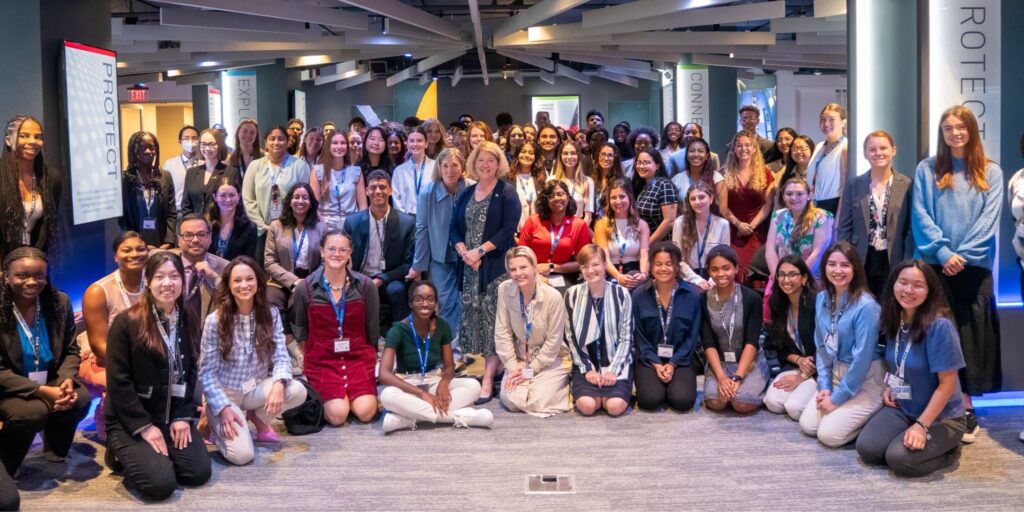
As part of the Brooke Owens experience, fellows were invited to DC to attend the BOF Summit. This 5-day event was phenomenal. I met the 2023 fellows who I became close friends with and attended several talks and 1-1 sessions with industry leaders such as Pam Melroy, Greg Robinson, and Lori Glaze to name a few. Meeting all the fellows and having 1-1’s with several executives in the industry was an incredibly moving experience for me. I had to be confident about my experiences and interests but also vulnerable about my abilities and willingness to sacrifice aspects of my career and personal life to fulfill my dreams. The summit helped me gain better clarity from the people around me regarding my place in the aerospace industry and what I could achieve beyond engineering.

A large pillar of the fellowship is giving back to the community. During the summit, fellows were tasked with a “Grand Challenge.” This year, my group of fellows was assigned with developing recommendations for mitigating stormwater wastage. We had one day to develop our plan and worked with an executive mentor (Diana Trujillo, a childhood “shero” of mine!) to make sure we were on track given the time constraints and were working towards an effective solution. These recommendations would be given to the National Space Council for potential policy implementation. This was an immensely enjoyable experience and allowed me to collaborate with both STEM and non-STEM majors on a national issue.
The fellows were also invited to the White House compound to meet with members of the National Space Council. This opportunity was fascinating and exposed me to a completely different set of issues plaguing the space industry. As I learned more about the growing commercialization of the space industry and areas that the government would like to improve, I became deeply interested in learning more about space policy as it is the foundation of missions and can trickle down, impacting the technical challenges I face everyday.
The running joke for the summit is that several fellows get bit by the “policy bug” every year and I was definitely subject to it! The challenges in the industry regarding orbital debris mitigation or the development of commercial space stations for example, were much different than the technical problems I was accustomed to. In the future, I would definitely be interested in developing space policy after satisfying my “technical itch.”
Beyond the Horizon: Embarking on the Next Chapter
Throughout my senior year, I became deeply interested in focusing my interests towards solving problems in the space industry, specifically in-space manufacturing. In-space manufacturing is a challenging but prevalent topic that will greatly benefit future space exploration endeavors. As the industry is pushing for the “Moon to Mars” campaign and the Artemis launch, developing cost effective and innovative techniques to assist with lunar or martian colony development would strongly impact future missions. As I wrap up my undergraduate degree, I am interested in pursuing a Master’s Degree in ME SUGS and gaining expertise in this area.
This past year has been an amazing learning experience for me and a lot of the U-M ME curriculum has helped lay a strong foundation for the different projects I’ve had the opportunity to work on. As well, the communication and team building skills I’ve obtained through X50 and X95 courses, Honors seminars, ASME, MDP, and project teams have helped me apply the technical skills I gained in coursework to real-world industry projects. Something I constantly tell my own students is that their experiences outside of the classroom can make or break their undergrad, and I stand by that even more this year.
More importantly, the countless moves and conversations I’ve had have shown me what it really means to be a Michigan engineer. The multidisciplinary work in this field has helped me explore different areas in engineering and has also contributed to my growing interest in socially-engaged projects. With just a few months left for my undergraduate degree, I am so excited for this next chapter in my life and will continue to shoot for the stars!
